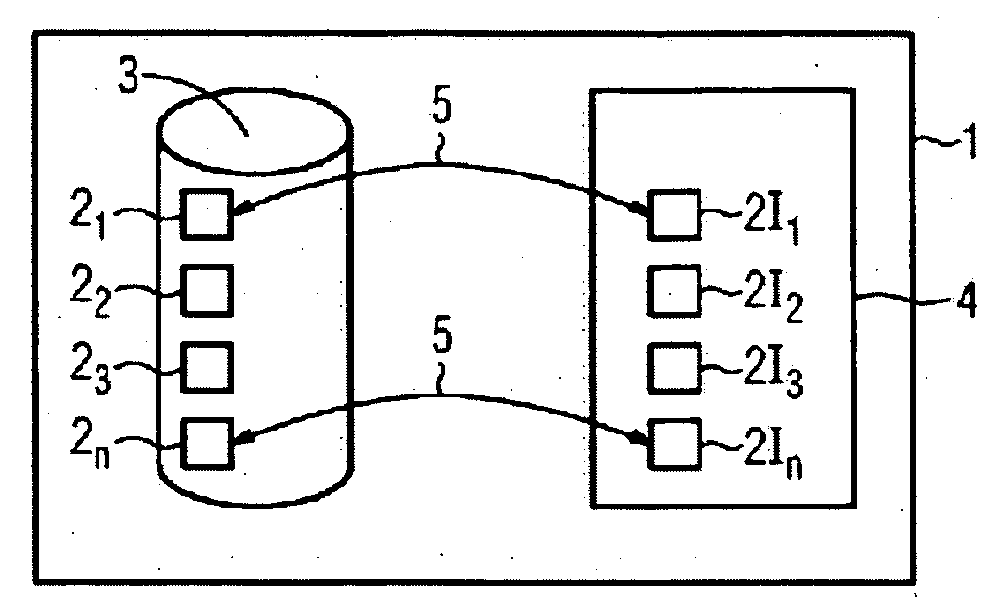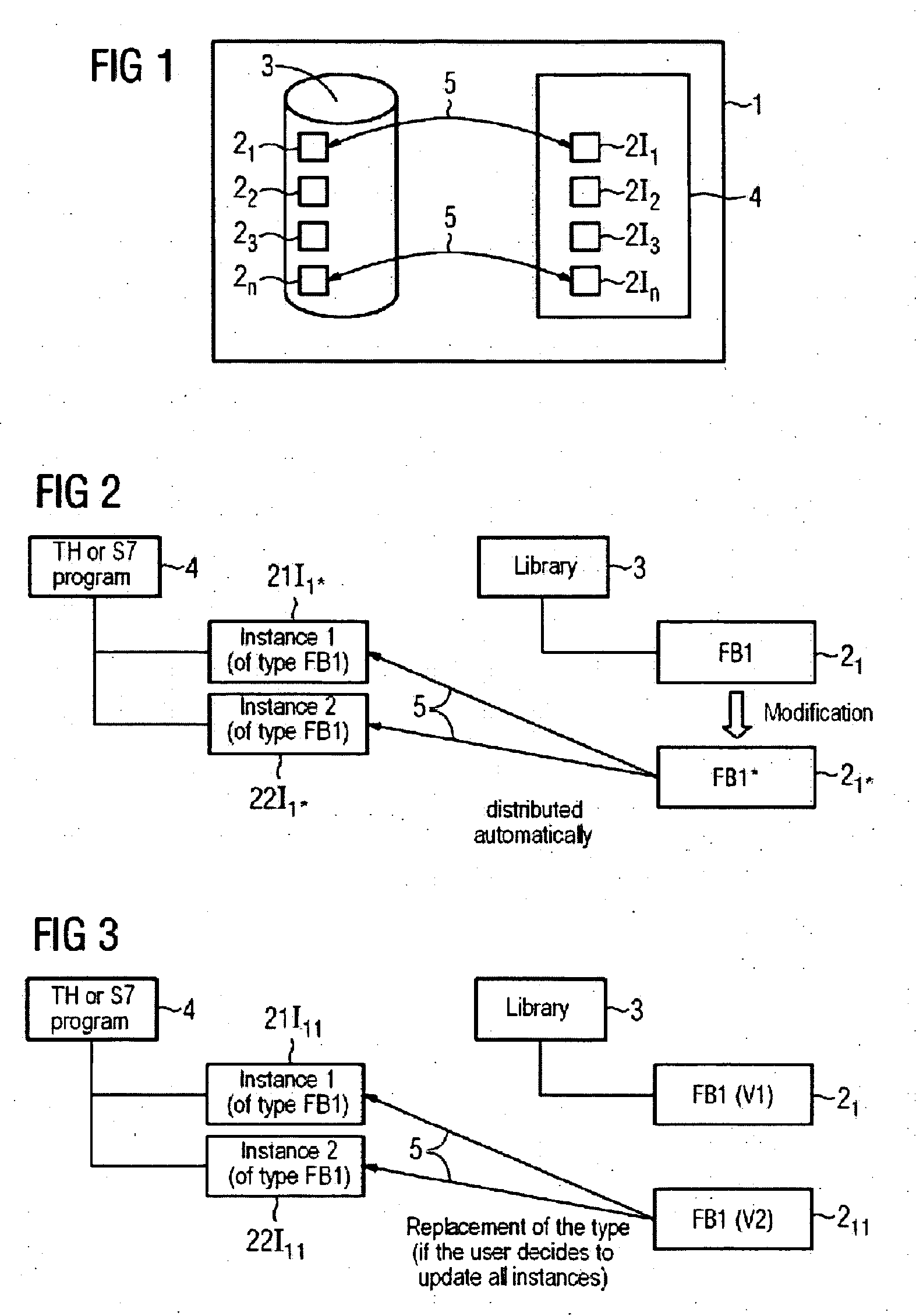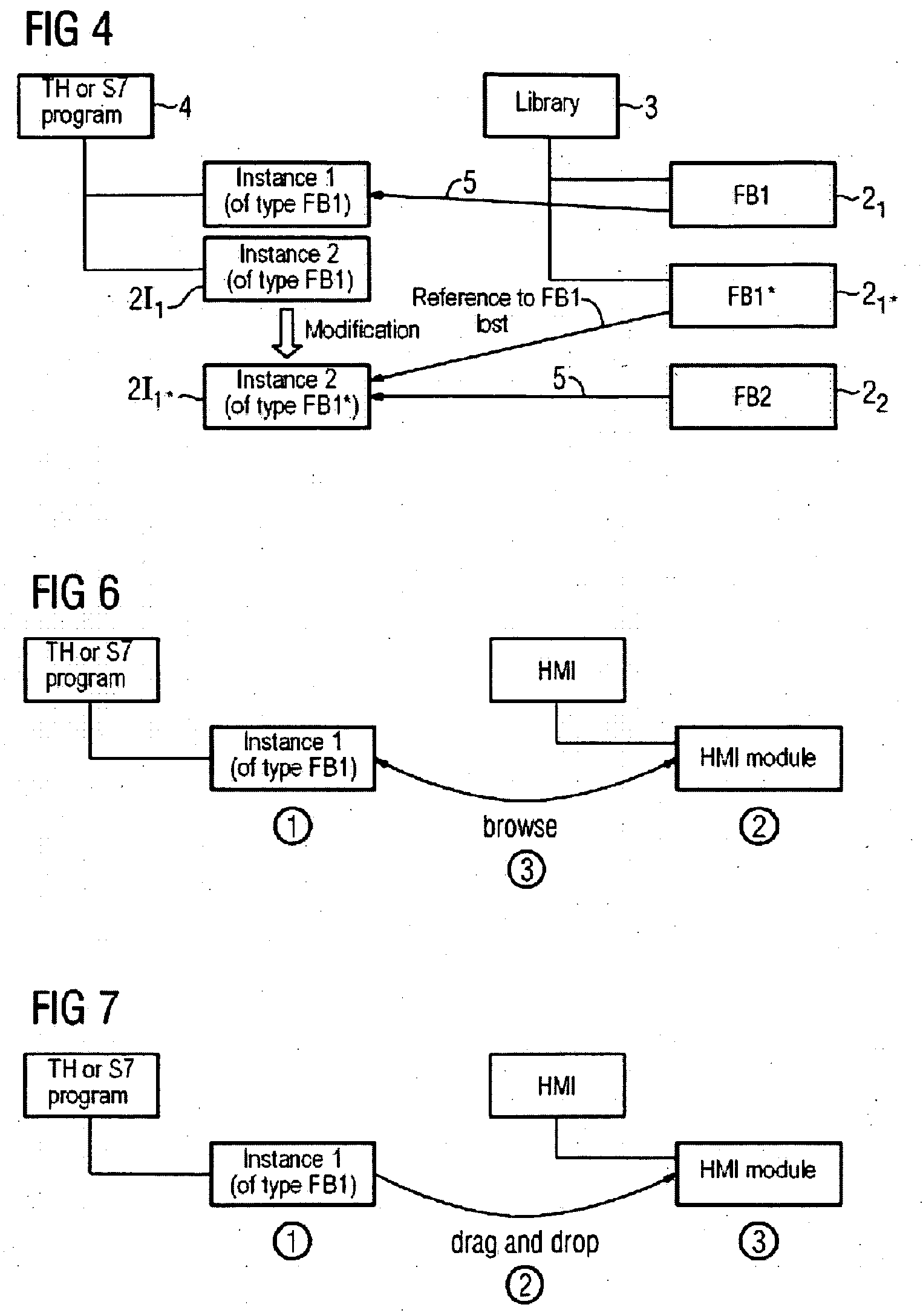System and method for reusing project engineering data
a technology of project engineering and engineering data, applied in the field of system and method for reusing project engineering data, can solve the problem of no provision for making modifications when using reusable modules, and achieve the effect of reducing development costs, time, effort and expens
- Summary
- Abstract
- Description
- Claims
- Application Information
AI Technical Summary
Benefits of technology
Problems solved by technology
Method used
Image
Examples
Embodiment Construction
[0030]FIG. 1 shows a system 1 for managing and providing elements 21 . . . 2n. The elements are stored in a library 3. The elements can be technological objects, for example pumps, valves or clamps. Within the framework of the system 1 the elements are available to a user for use in developing a solution 4, in particular an automation solution. For this purpose one or more exemplars 2I1 . . . 2In are created in each case as images of the elements. The exemplars are instances of the respective elements. The exemplars are available within the framework of the system 1 for developing an automation solution. The created exemplars or, as the case may be, instances are bi-directionally connected to the source elements, i.e. the types that serve as a basis for the instances. The connection takes the form of a link 5.
[0031] Within the scope of the system 1 according to the invention, a user creates one or more images of different types or, as the case may be, elements 21 . . . 2n, that are...
PUM
 Login to View More
Login to View More Abstract
Description
Claims
Application Information
 Login to View More
Login to View More - R&D
- Intellectual Property
- Life Sciences
- Materials
- Tech Scout
- Unparalleled Data Quality
- Higher Quality Content
- 60% Fewer Hallucinations
Browse by: Latest US Patents, China's latest patents, Technical Efficacy Thesaurus, Application Domain, Technology Topic, Popular Technical Reports.
© 2025 PatSnap. All rights reserved.Legal|Privacy policy|Modern Slavery Act Transparency Statement|Sitemap|About US| Contact US: help@patsnap.com



